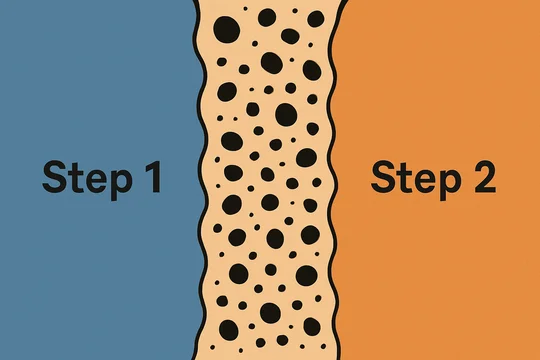
Here's one you don't see every day. Back in March, Judge Burke granted a § 101 motion to dismiss as to the claims of two of the six asserted patents in Topia Technology, Inc. v. Egnyte, Inc., C.A. No. 21-1821-CJB (D. Del. Mar. 31, 2023).
In that opinion, the patentee did not dispute that the claims were directed to the abstract idea of synchronizing a file across a network:
Plaintiff, for its part, does[ not] dispute that synchronizing multiple versions of a file across network computers is an abstract idea, and the Court agrees that it is. Again, in the parlance of the Federal Circuit, it appears to be a disembodied concept or a basic building block of human ingenuity untethered from any real-world application.
Id. at 4. The Court found the claims ineligible because they did not set forth how to sync the file:
[T]he claim reads as if it is all about the abstract idea at issue[—]synchronizing multiple versions of a file across network computers[—]and not on some more specific or particularized real-world application of that idea. As Defendant notes, the claim[] uses “highly generalized, result-oriented terms[;]” [i]ts focus seems to be not on explaining in any detail how these file transfers are to be accomplished, but instead simply conveying the “aspirational result of automatically transferring updated versions” of the file in the first place.
Id. at 6.
Now They Say "How"
The amended complaint, it turns out, explained the claims well enough that the Court found at least an issue of fact as to whether the claims articulate "how" to accomplish the abstract idea.
The amended complaint newly argued that the claims are subject to two limitations that form inventive concepts: (1) that local copies of the files were synchronized between client devices, rather than stored on a server; and (2) that the whole file, not part, is transferred. Topia Technology, Inc. v. Egnyte, Inc., C.A. No. 21-1821-CJB, 7 (D. Del. Jul. 6, 2023).
The Court found that those limitations were sufficient to set out the "how" in the claims under Alice step 2:
[T]he representative claims of the two patents at issue do seem to align with these two inventive concepts. And the presence of these inventive concepts also seems to render the claims more particularized than the abstract idea at issue—in that when one takes the concepts into account, the representative claims can be said to no longer be broadly about “synchronizing multiple versions of a file across network computers.” Instead, the claims arguably describe a system that promotes a more specific way to synchronize such files across network computers (i.e., by utilizing applications and storing modified documents on a local device and not a server, and by transferring entire files and not simply the modified portions of those files). This is enough to raise a factual dispute at step two about patent eligibility, sufficient to render the filing of the Amended Complaint a non-futile act.
. . .
[I]t is true, the claims do not provide much that speaks to this additional level of “how.” But as the Court has noted above, the claims do seem to provide at least one level of “how”—in that they describe a particular way that the systems “synchronize multiple versions of a file across network computers”: that is, the systems do so by using applications contained on local devices (not on servers), by storing the modified content on local devices (not on servers) and by transferring entire files (not simply the modified portions thereof). In this way, there is enough “how” in the claims to enable Plaintiff to plausibly assert that the patents do not “preempt all ways” of utilizing the abstract idea.
Id. at 8.
Was This Claim Construction?
It's not entirely clear to me that the Court is applying a new construction to any specific term in the claims. The decision reads more like a second bite at the original § 101 dispute, where the Court now simply views the same claims in a different light and focuses on different elements as the potential inventive concepts.
In fact, the Court noted its frustration with the plaintiff for not making these arguments the first time around—although it ultimately accepted them without discussing waiver or forfeiture:
What is frustrating for the Court, of course, is that in its briefing on the prior MJP, Plaintiff did not provide a very clear articulation of the import of the “local device/not-server-based” concept or the “transmit a whole file, not a portion thereof” concept. . . . At a minimum, in that briefing, Plaintiff certainly did not highlight the significance of these asserted inventive concepts to the same degree that it does now. . . .
Nevertheless, a much clearer discussion of these purportedly inventive concepts is now included in the Amended Complaint (and in Dr. Shenoy’s expert declaration, referenced therein).
Id. at 7.
All told, plaintiff's counsel pulled off a pretty deft maneuver here—filing an amended complaint that articulates the claims in a way that flat-out undoes the ineligibility finding for two patents, while also seemingly avoiding specific limiting constructions and preserving their infringement positions. Well done!
If you enjoyed this post, consider subscribing to receive free e-mail updates about new posts.




